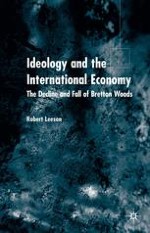2003 | Buch
Über dieses Buch
For twenty-five years, the International Monetary Fund administered a worldwide system of fixed exchange rates until their system was destroyed by a combination of market forces and those who advocated market forces. The first destructive element has been extensively analyzed; the second has hitherto been almost completely ignored. Robert Leeson examines the process by which the case for flexible exchange rates was transformed from an academic exercise to become the organizing principle for international monetary relations.
Anzeige
